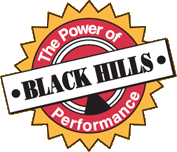The Story of Black Hills Ammunition
June 12th, 2023
8 minute read
Twenty years after Jeff Hoffman left the Rapid City Police Department to load ammunition for Black Hills Shooters Supply, he and wife Kristi filled a Navy contract for 50 million rounds of 77-grain 5.56mm ammo. Not from BHSS, however. The Hoffmans had bought into that company, but in 1989 split from it to sail their own ship as Black Hills Ammunition.
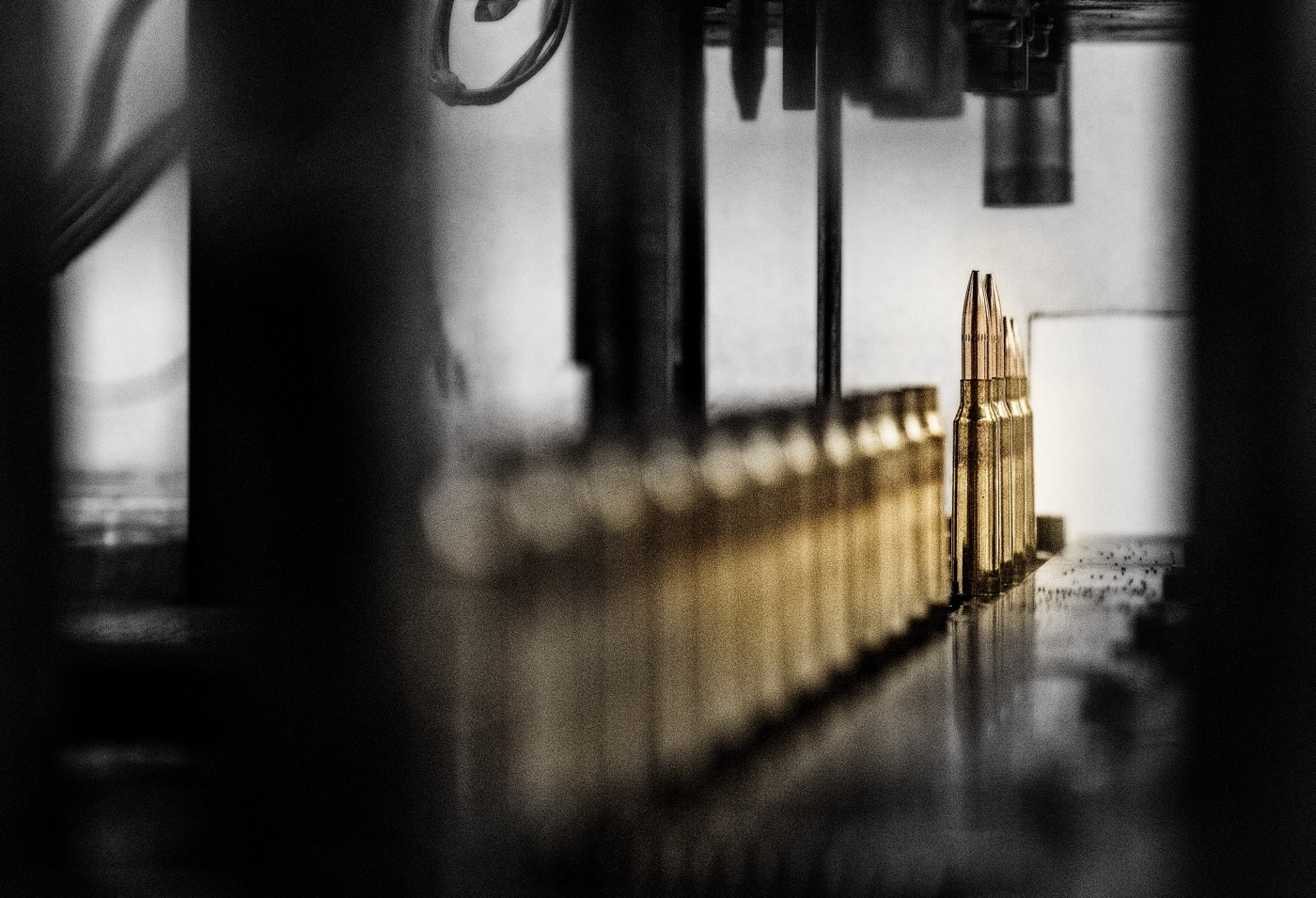
They launched BHA in what I recall as a metal shed crammed with people, stacks of boxes and a forest of hand-pumped loading presses. A rabbit warren. Aisles between the stations were so tight I had to time my step between press strokes. A shipping container outside held components and finished ammo. The Hoffmans’ first efforts at cartridge manufacture were reloads for the RCPD. Jeff’s crew at the station remained faithful customers, but their orders would hardly carry his and Kristi’s new enterprise.
“I quickly found we couldn’t compete with Winchester, Remington and Federal,” Jeff admitted. “We’d have to offer something they didn’t. Expenses were eating into our savings while we tried to come up with a plan. A big order from the Illinois State Police saved us that first year.” Law enforcement (LE) and military contracts would continue to fuel the business. One of the most helpful came from the Army’s marksmanship unit — the AMU, or USAMTU — the training unit whose members in my competitive days were the shooters to beat at any match. “That contract gave us credibility, hiking our commercial sales.”
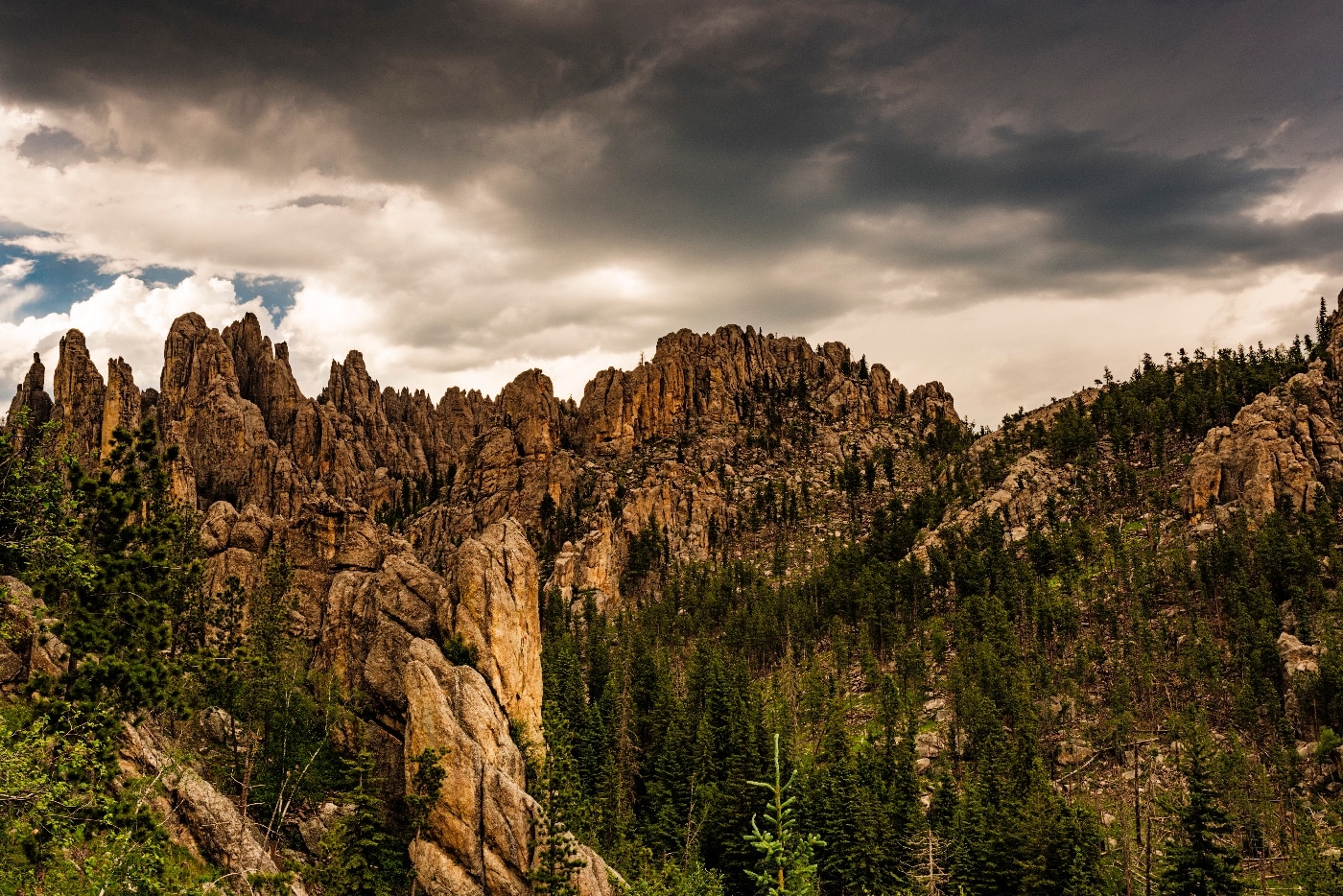
The Hoffmans’ dreams were much bigger than could mature in their first shop. On my next visit, Jeff drove me across town to a big, empty building that looked like…. “A creamery,” he nodded. “And so it is. But not for long.” We traipsed through a sprawling 60,000 square feet of cavernous tank rooms, and a labyrinth of freshly framed annexes. “We’ll fill ’em all, and soon.”
A couple of years ago, re-tracing my steps through that plant, I was stunned by the changes. From loading rooms to the ballistics lab, BHA’s new digs oozed high-tech. While the annexes evidenced no link to the dairy industry, they were as spotless as if BHA were shipping milk. But the work, Jeff told me, was far from finished. “We need more space, more tooling. Demand is already outstripping our capacity to meet it. Sometimes component shipments can’t keep up with our production lines.”
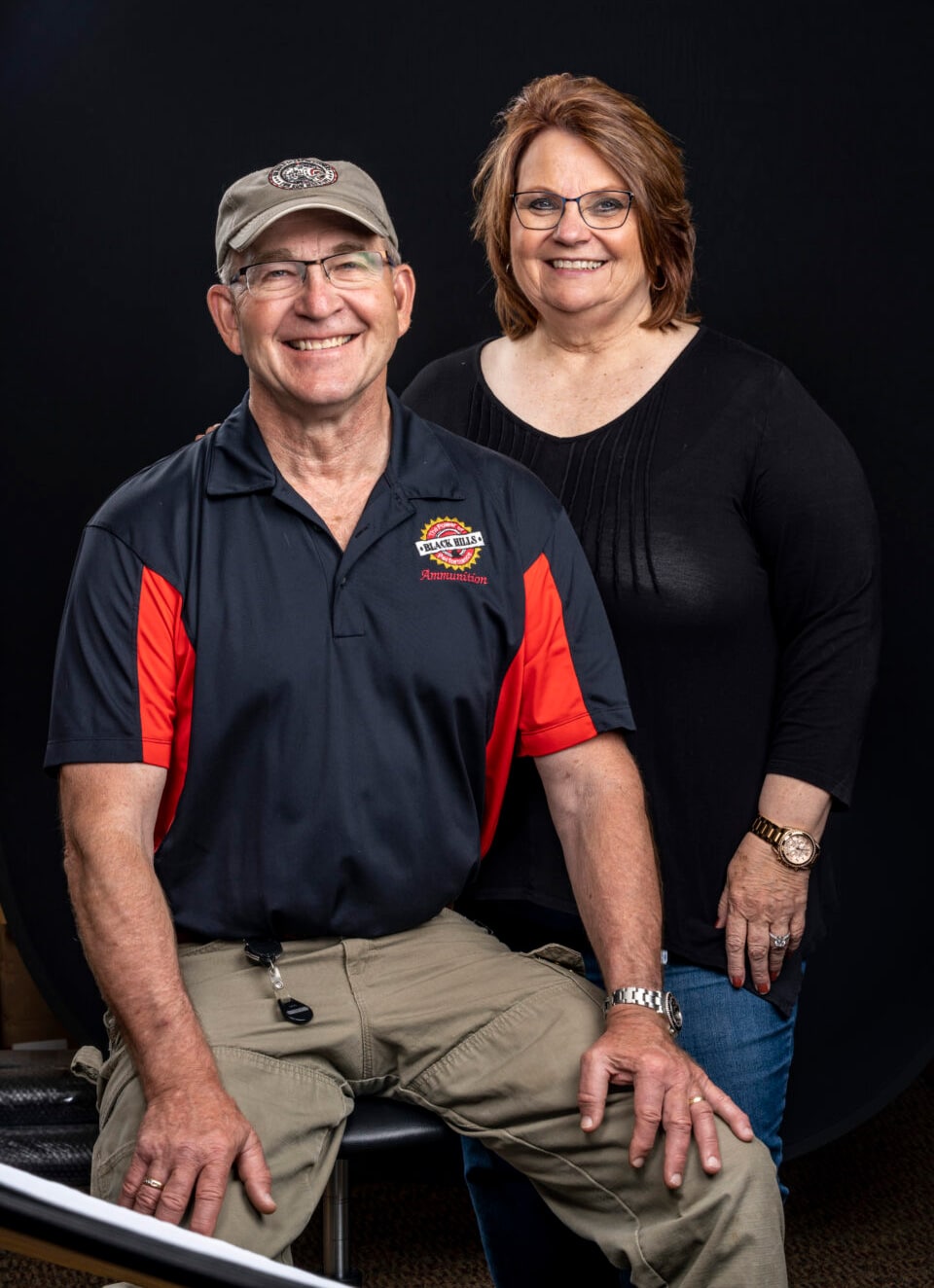
Following the Army’s lead, the Navy and then the Marine Corps placed orders. Suddenly, BHA had contracts to supply all the 5.56 match ammo for the U.S. armed forces! “We had our hands full,” said Jeff. “We were truly blessed.” But then came another windfall: a request for “operational” ammunition. “That path has led to 35 products we developed for the U.S. government, mainly for the Department of Defense. Our foot stays on the throttle to meet deadlines, but we never compromise on quality.” Jeff is proud of the thanks he, Kristi and BHA’s crew routinely get from U.S. Special Forces. “Those fellows know we know that each shot in combat can be mighty important.”
The Refined Choice
BHA began early to court discriminating markets, holding its products to standards hard for other ammunition companies to match. A 50-gr. .223 load clocking 3,335 fps nips half-minute groups for me. “We expect that level of accuracy,” Jeff said, “though it’s well above the industry average.”
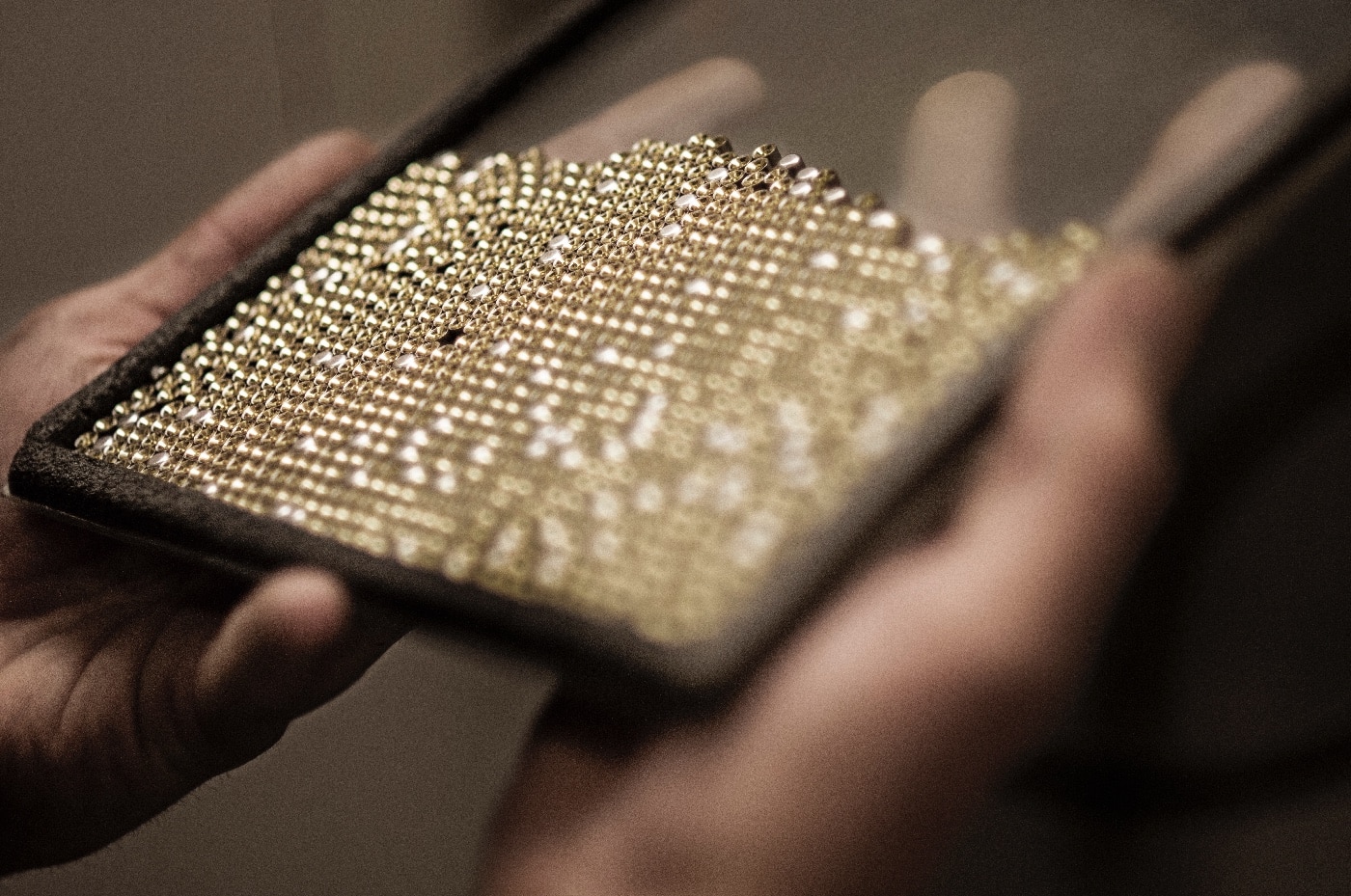
High standards have drawn a steady stream of military contracts. Success on the military front has nudged BHA to enlarge its commercial footprint. In 1999, the Navy asked for a “precision” 5.56 NATO load. BHA’s lab responded with a 77-grain MatchKing at 2,750 fps:
Black Hills MK 262 Mod1-C load, 77-gr. Sierra TMK
| Muzzle | 100 yards | 200 yards | 300 yards | 400 yards | 500 yards | |
| Velocity | 2,750 fps | 2,520 fps | 2,295 fps | 2,070 fps | 1,870 fps | 1,685 fps |
| Arc | -1.5″ | +2.0″ | 0″ | -8.5″ | -25.0″ | -52.0″ |
Since then, MK 262 Mod1-C ammunition has become available to civilian customers buying 420 rounds, 20 to a box, shipped in an ammo can. Each lot is tested to meet tough military specs. Ten, 10-shot groups (yes, 100 bullets!) at 300 yards must hold to a .64-MOA standard — 2″ groups at that distance! Hoo, boy! Not all 5.56 rifles can deliver such results. I said so to Jeff. “We use very accurate test barrels,” smiled Jeff. “And we scrap them before we have to.”
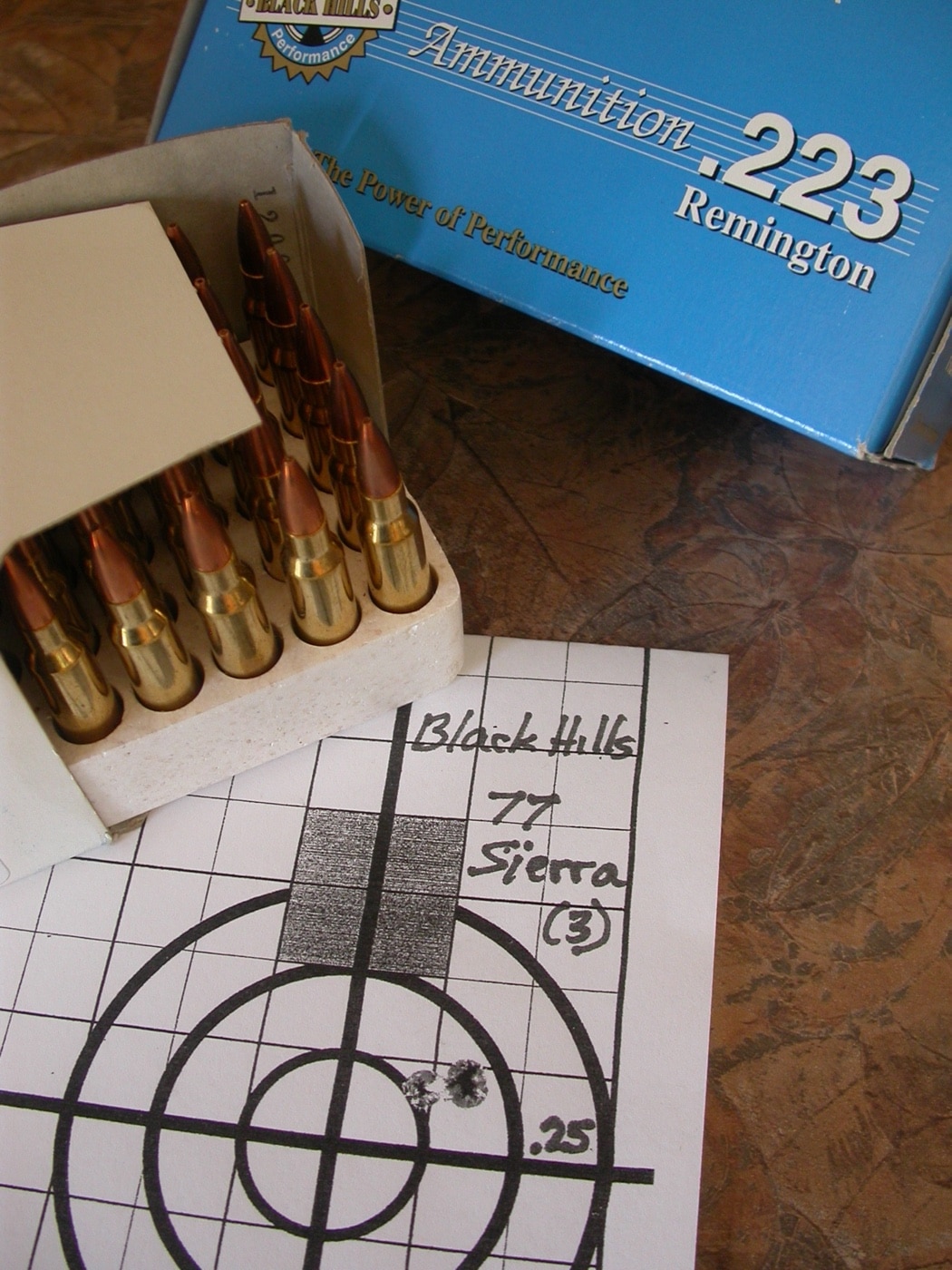
The manufacturing care evident in BHA military ammunition also distinguishes its hunting loads. “Gold” ammo, .22-250 to .338 Lapua, features bullets from Barnes, Hornady, Nosler and Sierra. This line recently added the 6mm and 6.5 Creedmoor, for accurate hunting/match rifles like Springfield Armory’s Waypoint. There are 12 BHA Gold loads for the .308, eight for the .30-06. Over a chronograph and afield, I’ve found Gold as good as or better than its competition.
There’s also the New Rifle series of U.S. service cartridges: 23 options in .223 and 5.56 NATO, plus four in .300 Blackout, with match loads in .308, .300 Winchester, .338 Norma and .338 Lapua. The New Pistol family includes eight handgun rounds, six loads each for the 9mm and .45 ACP, three in .40. The wide selection of BHA bullet weights and types reflects the Hoffmans’ efforts to cultivate and maintain good working relationships throughout the industry. “We achieve more when we have friends to help,” he observes. It’s a philosophy Jeff and Kristi seem to bring to all relationships. They don’t reserve courtesy and generosity for business alone.
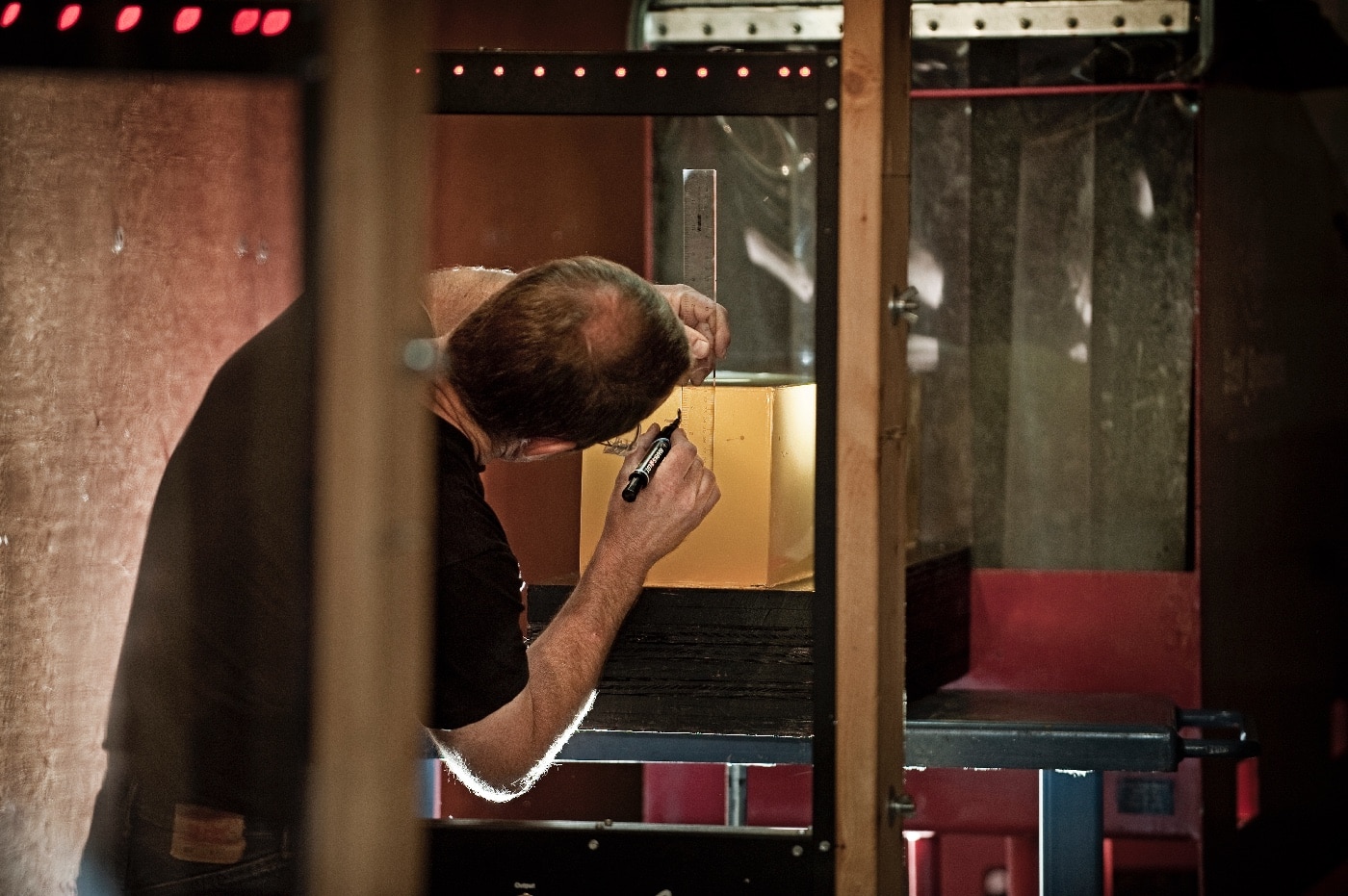
Still, they and BHA’s quality control staff are ruthless in culling ammo that doesn’t measure up. “We inspect each cartridge, from component stage to packaging,” Jeff said. “Yes, that’s millions a year. And yes, we do. However difficult or time-consuming, it’s part of our job. We spend more on inspection than on loading.” Most of the ammunition comes off straight-line commercial presses. Loading speed is controlled by operators who look for component flaws and can stop their press at any time. I’m told BHA tolerances are tighter than those imposed by SAAMI (the Sporting Arms and Ammunition Manufacturers Institute) or our armed forces. Finished cartridges run a QC gauntlet. Visual inspection is followed by a “block gauge” test for uniformity.
Modern Classics
“Hands up, Kid!” The bandit spun. His Peacemaker barked five times, fast. Sprinting through the smoke, he vaulted into the saddle, yanked at his carbine. “You won’t take me alive!” More bullets flew.
Such mayhem marked the frontier and times of William Bonney and John Wesley Hardin. But the miscreant this day was an accountant with a scripted snarl. He drove a Japanese sedan with a Starbucks cup in the console. On weekends, he “got Western” as Sixgun Slim. So did his wife, a soccer mom turned Sidewinder Sue.
Cowboy Action events draw spectators with 1880’s dress and venues. Jeff and Kristi Hoffman saw the appeal early on, and were soon loading lead-bullet ammo for Cowboy shooters. Current offerings are as follows:
| Cartridge | Bullet | Velocity |
|---|---|---|
| .32 H&R | 90-gr. FP | 750 fps |
| .32-20 | 115-gr. FP | 800 fps |
| .38 Long Colt | 158-gr. RN | 750 fps |
| .38 Special | 158-gr. CN | 800 fps |
| .357 Magnum | 158-gr. CN | 800 fps |
| .38-40 | 180-gr. FP | 850 fps |
| .44-40 | 200-gr. RNFP | 800 fps |
| .44 Russian | 210-gr. FP | 650 fps |
| .44 Special | 210-gr. FP | 800 fps |
| .45 Schofield | 230-gr. RNFP | 730 fps |
| .45 Colt | 250-gr. RNFP | 725 fps |
| .38-55 | 255-gr. FP | 1,250 fps |
| .45-70 | 405-gr. FP | 1,250 fps |
Round- and flat-nose lead bullets at traditional speeds make these oldies a pleasure to shoot. My six-shooter in .45 Colt hops gently with BHA Cowboy loads, but the 250-gr. slugs flatten steel! My .38-55 Lyman “baby Sharps” has grouse-gun heft, but it’s civil in recoil, while its lumbering lead punches snug groups. “We hew to 1880’s pressures so they’re safe in vintage rifles and revolvers,” explained Mike Wright, whose ballistics savvy has blessed BHA. He added that even mild smokeless loads can test steel. “Their pressure curves differ from those of black powder.” A useful caveat for shooters dusting off 19th-century firearms!
More recent at BHA is the HoneyBadger line. It’s named after the African mustelid that earned title honors in a Ruark novel — a tenacious, relentless burrower and predator unfazed by obstacles. “HoneyBadger bullets exhibit those qualities,” said Jeff, who, with Dave Fricke of Lehigh Defense, developed the all-copper missiles.
HoneyBadgers were designed to be “barrier-blind.” Even bonded lead-core bullets deform when fired through glass and other hard, abrasive materials. Cloth and wood, among soft barriers, can plug hollow points, preventing upset. Hoffman and Fricke sought a bullet that resisted deformation and thus flew straight through obstacles, and also one that didn’t depend on upset for lethal effect.
They may have had in mind the fluted, sintered copper bullets developed by Charlie Kelsey in the early ’90s. But the HoneyBadger is solid copper. Its nose flutes — three or four — are deep. A cannelure permits a roll crimp. Some HoneyBadgers have an additional cannelure to reduce chamber pressure. Some feature a recessed base — a useful detail, notes former Hornady engineer Dave Emary. “It lengthens bearing surface to better seal gas and improve accuracy. Moving the bullet’s center of gravity toward the nose can also enhance in-flight and post-impact stability.”
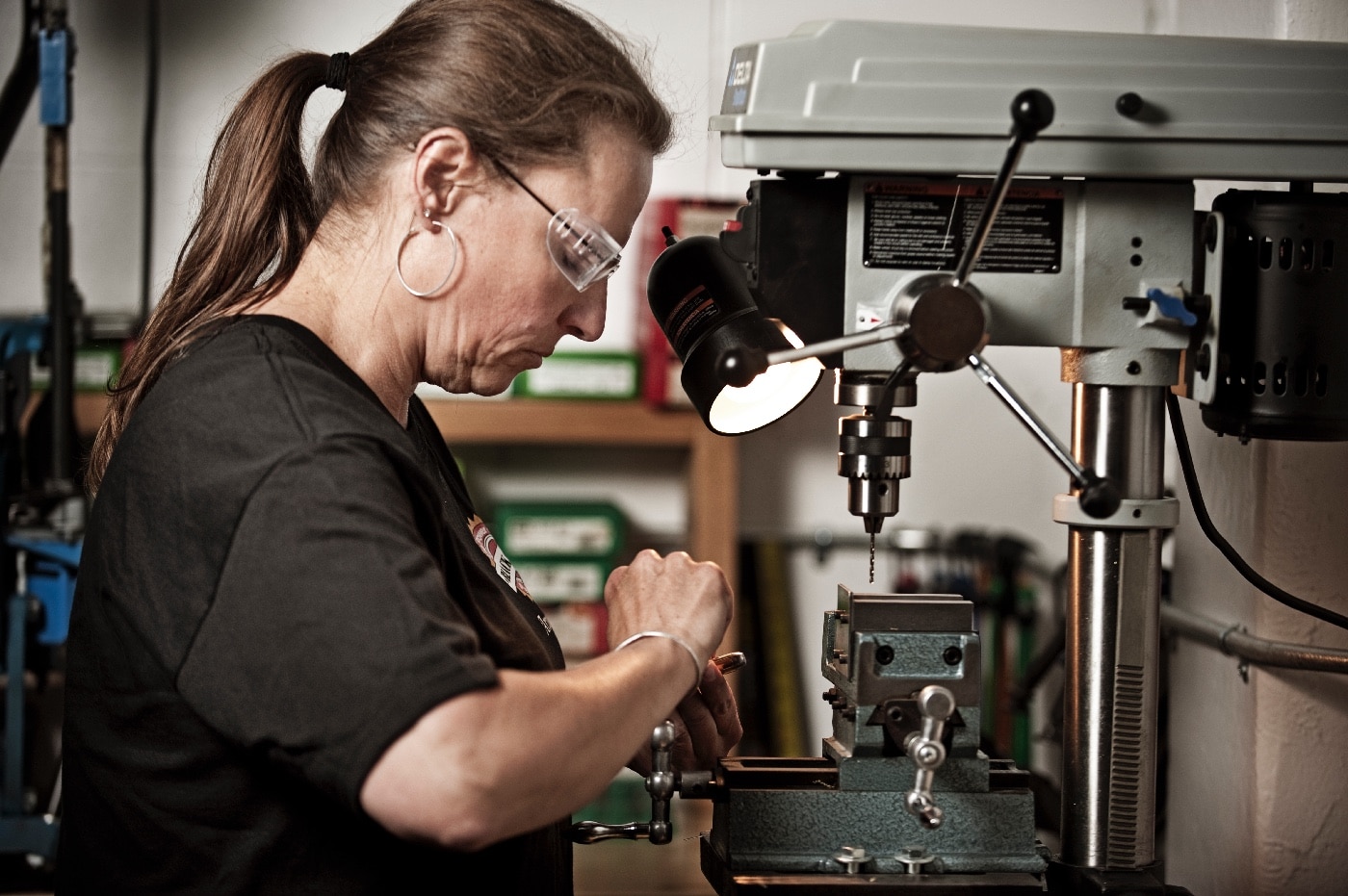
While their lead-free shanks limit their weight, HoneyBadgers can be driven faster than lead-core bullets. They fly flatter and bring plenty of moxy to the target. I find HoneyBadgers a bit less punishing in recoil than jacketed hollow-point (JHP) loads stoked to similar pressures. Accuracy is on par with the JHP’s.
HoneyBadgers don’t expand on impact, but ballistic gelatin shows impressive temporary cavities. The bullets continue in straight paths to cut deep channels. Introduced six years ago in .380 Auto (60 grains) and 9mm and .38 Spl. (100 grains), HoneyBadger bullets now come in seven other cartridges: .357 Mag., .40, 10mm Auto, .44 Spl., .44 Mag., .45 ACP and, for rifle enthusiasts, a 325-gr. load in .45-70.
Conclusion
Compared to payrolls of other ammunition firms, BHA’s is small — around three dozen full-time employees. But according to the Hoffmans, they’re talented, hard-working and keen to deliver top-quality ammo. It’s a close-knit clan. When Covid panic threatened to ground workers even in South Dakota, Jeff arranged for pallets of food to be delivered to the plant at no cost to the crew.
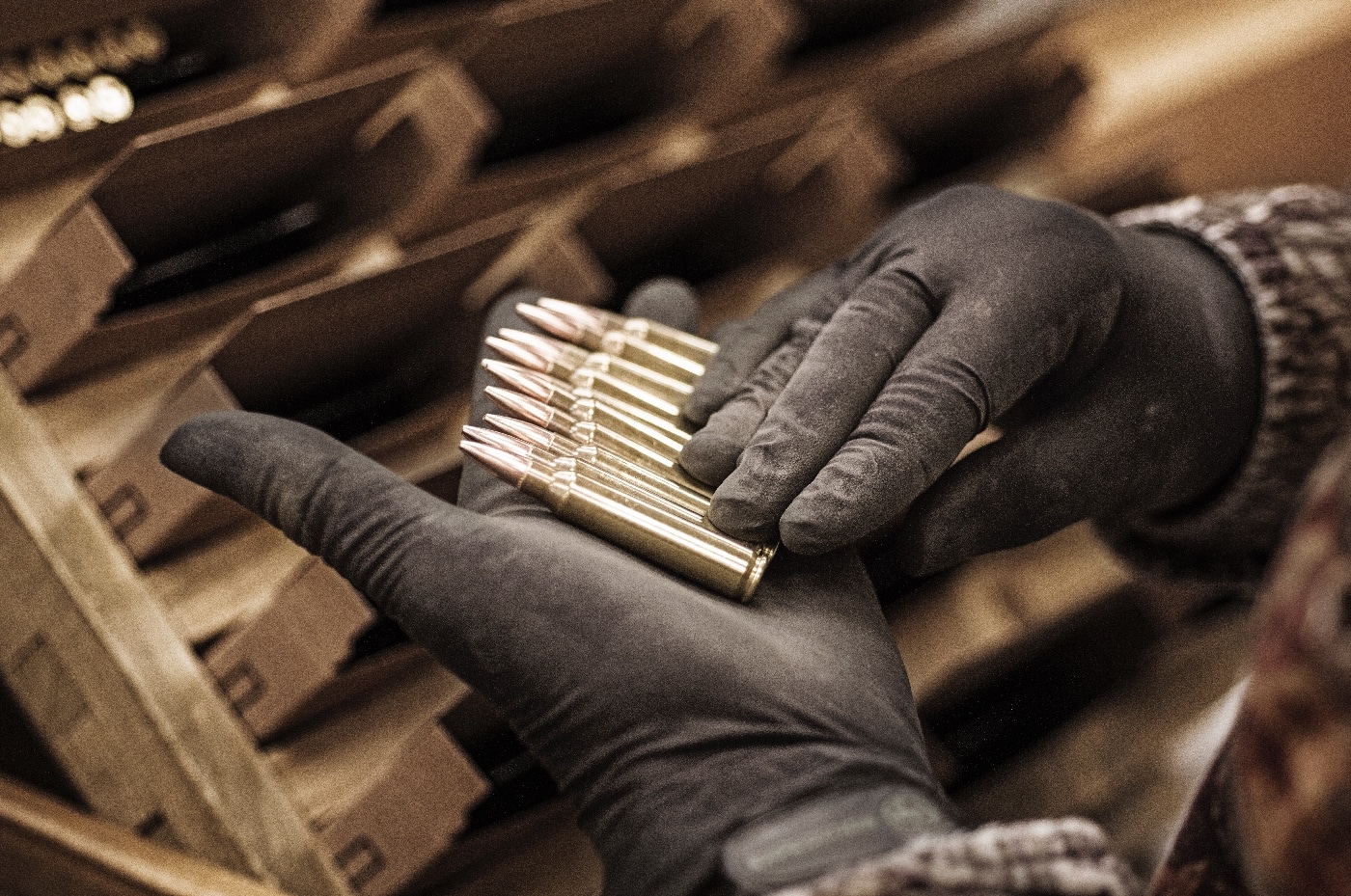
Ever taking the industry’s pulse, Jeff has seen ballistic efficiency in rifle loads steal the attention once given to high velocity. A wave of first-time gun owners is gobbling ammo for small pistols. BHA’s catalog reflects brisk demand for long-range and self-defense loads. Ideally, shifts in production and sales follow — or anticipate and even fuel — market trends. Still, some change is forced. Ammunition manufacture and sales are affected not just by product design and advertising, but also on timely access to components! Supply chains can determine what’s available, cataloged and not.
Now 40 years in business, Jeff and Kristi Hoffman and Black Hills Ammunition have met many challenges, endured just about every industry cycle. And if the past is prologue, they are clearly more than ready for the future.
Editor’s Note: Please be sure to check out The Armory Life Forum, where you can comment about our daily articles, as well as just talk guns and gear. Click the “Go To Forum Thread” link below to jump in!
Join the Discussion
Featured in this article
Continue Reading
Did you enjoy this article?

 198
198




